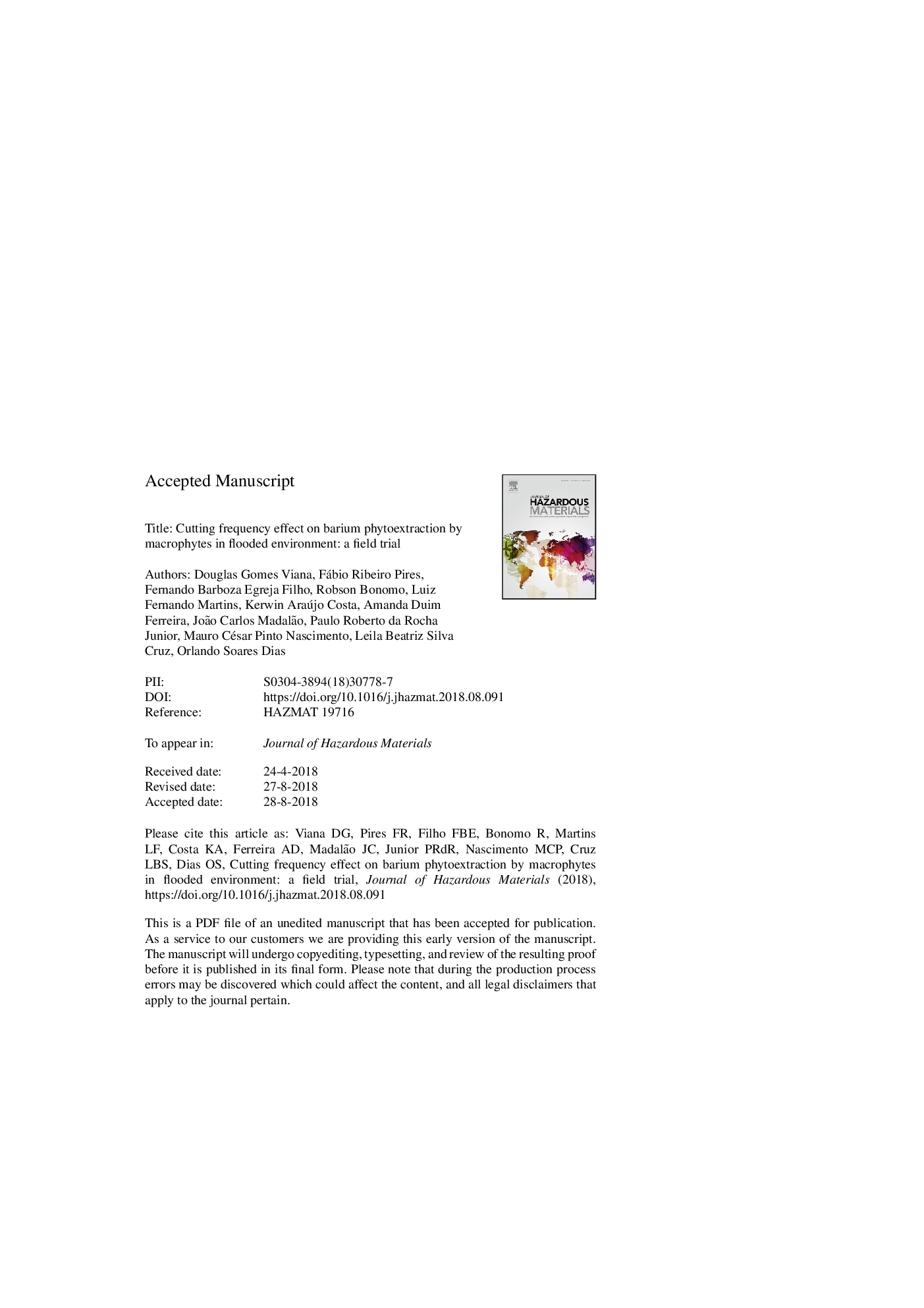| Article ID | Journal | Published Year | Pages | File Type |
|---|---|---|---|---|
| 10151640 | Journal of Hazardous Materials | 2019 | 21 Pages |
Abstract
In anoxic environmental conditions and with a drastic reduction of the redox potential, the barium sulphate used in petroleum drilling fluids becomes a hazard to the ecosystem. A field study was conducted in Brazil in an area with a history of accidental Barium (Ba) contamination to evaluate the role of frequent plant cutting on phytoremediation. The plant species Typha domingensis and Eleocharis acutangula, cultivated in a combined plantation, were subjected to four different cut frequencies: every 90 days (four cuts), 120 days (three cuts), 180 days (two cuts), or 360 days (one cut). The total amount of Ba extracted from the soil by the plants was evaluated for each treatment and at different soil depths Overall, total Ba in the soil decreased the most dramatically for cut frequencies of 120 (37.83%) and 180 (47.73%) days at 0-0.2âm below the surface, and with cut frequencies of 120 (51.98%) and 360 (31.79%) at 0.2-0.4âm depth. Further, total Ba in the plant biomass was greatest in the 120 and 360-days frequency groups. Thus, cuts at intervals of 120 days or more are associated with high levels of Ba in the plant tissue and a decrease of soil Ba.
Related Topics
Physical Sciences and Engineering
Chemical Engineering
Chemical Health and Safety
Authors
Douglas Gomes Viana, Fábio Ribeiro Pires, Fernando Barboza Egreja Filho, Robson Bonomo, Luiz Fernando Martins, Kerwin Araújo Costa, Amanda Duim Ferreira, João Carlos Madalão, Paulo Roberto da Rocha Junior, Mauro César Pinto Nascimento,
